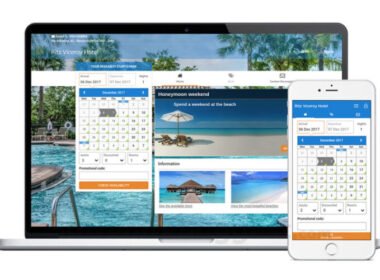Efficiency is crucial for companies to remain competitive in the business environment these days. Most of the time, employee onboarding is lacking. Old traditional techniques can be tedious and time-consuming.
Automation, however, is the silver bullet to this tech mess — it makes everything easier and supercharges productivity. Let’s delve deeper into what automated employee onboarding entails.
Typical Onboarding Process
Onboarding used to be a complex process, with loads of paperwork and in-person meetings. However, these processes were manual, which meant they were time-consuming and prone to mistakes. New employees might feel lost, and important data could be lost. This not only leads to inefficiency at the time of recruitment but also puts the burden on the human resource departments.
Benefits Of Automation
Automating onboarding can make the process much better for everyone involved. Digitizing paperwork is a great way to minimize mistakes and automate processes that would normally take a lot of time to complete. New hires can be led through tasks by automated systems so that no steps are missed along the way. This also helps human resources to engage in more strategic activities.
Enhanced Employee Experience
A smooth onboarding process is also a first mover towards a new hire. It means hiring employees will get the same repeated answer. This way, they can access information that they need exactly when they need it, and this reduces the stress. This allows employees to adjust easily and have more confidence in their jobs.
Consistency And Compliance
When you onboard new team members, consistency is also critical. Standardized information and training are provided to every employee through automated systems. This consistency ensures compliance with company and legal policies. This lowers the chance of mistakes and also keeps organizations safe from any legal trouble.
Integration With Existing Systems
These tools can be incorporated into existing software without any hassle. This means that you can easily pull information and efficiently communicate between departments. For example, payroll and benefits systems can be automatically updated with new employee information. It eliminates duplicate data input and reduces the risk of errors.
Cost And Time Savings
Time is a resource, and automation enables organizations to capitalize on it. It frees up time for employees by reducing the time spent on manual task management. This means cost savings, as fewer resources are needed for onboarding. Moreover, a quicker onboarding process means that an employee can start performing towards the company’s goals earlier.
Adapting To Remote Work
With the rise of remote work, automated onboarding becomes even more important. It allows organizations to efficiently bring new team members on board, regardless of their location. Digital platforms enable seamless communication and collaboration, ensuring that remote employees feel connected and supported.
Customized And Adaptable
Automation does not mean a one-size-fits-all approach. Systems can be customized to meet the unique needs of different roles and departments. Personalized onboarding experiences can be created, providing relevant information to each employee. This flexibility ensures that each new hire receives the support and resources they need to succeed.
Measuring Success
Automated systems offer valuable insights into the onboarding process. Analytics can track completion rates, identify bottlenecks, and measure employee satisfaction. These metrics allow organizations to continuously refine their approach and improve the onboarding experience. By understanding what works and what doesn’t, businesses can make informed decisions to enhance efficiency.
Overcoming Challenges
Although automation has many advantages, it can also bring some challenges. Not every worker will accept change easily, and many workers may want to stick to the old ways. The way to tackle this is to communicate and train clearly. Highlighting the benefits of automation can not only smooth the transition period but may also encourage workers to adopt best practices.
Future Prospects
The opportunity to automate onboarding is only increasing. As technology evolves, new tools and features will be released. Organizations that embrace these innovations will place themselves ahead of the game in the never-ending search for top talent. Businesses that focus on efficiency and employee satisfaction will reap the rewards for years to come.
Conclusion
Automation of the employee onboarding process is a great means to improve efficiency. Automation can make things more efficient and cut down on repetitive work, allowing organizations to save both time and resources. Not only is this helpful for the company, but it also enhances the experience for the new hire. Automated solutions are the key to unlocking future profitability in an ever-competitive landscape for businesses in the years to come.










